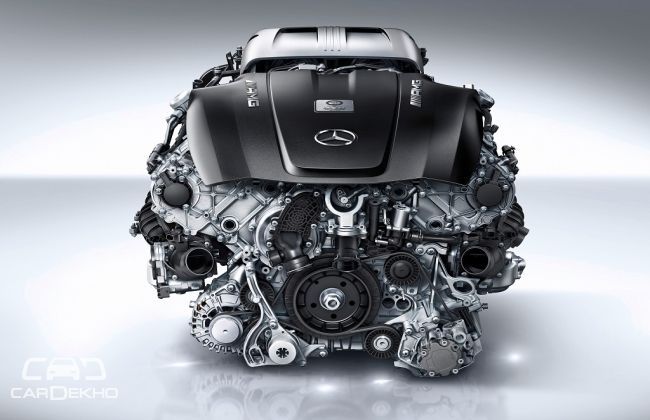Mercedes' all-new AMG 4.0-litre V8 biturbo engine revealed
Modified On Jul 26, 2014 10:15 AM By Akshit
- Write a comment
Mercedes-Benz has revealed an extensive information about its new 4.0-litre twin-turbocharged V8 engine, that will be making its way under the hood of 2015 Mercedes-AMG GT and the next-gen C63 AMG.
Codenamed as AMG M178, the 3982 cc bi-turbo eight-cylinder, capable of whopping 510 ps at 6250rpm and 650 Nm of peak torque between 1750 and 4750rpm. The mighty unit has a dry weight of just 209 kgs. And meets the emission-six norms. As per the AMG policy, each engine will be assembled in Affalterbach by one person from go to whoa, and sport a signed plate attesting the fact.

Expressing his views on the engine, Tobias Moers, Chairman of the Board of Management of Mercedes-AMG GmbH said, “V8 engines are an integral part of the AMG philosophy and the brand’s commitment to ‘Driving Performance’. The V8 biturbo engine for our new GT is going to delight our customers!”
Adding his thoughts on the new AMG V8, Christian Enderle, Head of Engine and Powertrain Development at Mercedes-AMG said, “The new AMG 4.0-litre V8 biturbo sees us presenting an exciting and powerful sports car engine which, thanks to a number of measures, also represents the next step in efficiency.”

The V8 comes equipped with an eco start/stop function to deliver better fuel efficiency. The engine also has a separate cooling-air flow for the exhaust gas turbochargers during high thermal load. And due to placement of each exhaust gas turbos inside the V, rather than on the outside of the cylinder banks, helps in keeping the engine relatively compact in size.
Equipped with third-generation piezo injectors handling the direct fuel injection, an aluminum crankcase that is strong enough to handle injection pressures of 130 bar while cutting weight and cylinder bore surfaces with Nanoslide technology that makes them twice as hard as cast-iron. Else, its cylinder heads is made of a zirconium alloy for 'maximum temperature resistance and thermal conductivity.'















